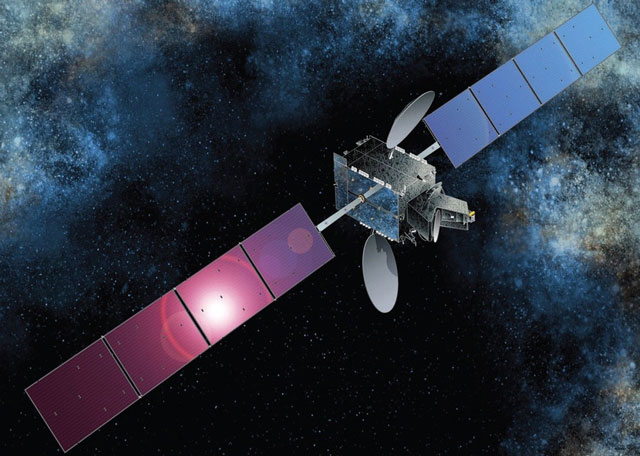
In the 21st century, the familiar form of warfare in which physical damage is meted out against the opponent’s military forces and infrastructure has become only one form of attack. Instead, states are increasingly launching non-lethal attacks against an enemy’s information systems — this is the rise of information warfare.
Dan Kuehl of the National Defence University defined information warfare as the “conflict or struggle between two or more groups in the information environment”. You might say that just sounds like a fancier way of describing hacking. In fact, it’s a lot more sinister and a lot more dangerous than its somewhat tame name implies.
Western leaders are investing billions to develop capabilities matching those of China and Russia, establishing military commands for attacking, defending and exploiting the vulnerabilities of electronic communications networks. Information warfare combines electronic warfare, cyberwarfare and psy-ops (psychological operations) into a single fighting organisation, and this will be central to all warfare in the future.
The free flow of information within and between nation states is essential to business, international relations and social cohesion, as much as information is essential to a military force’s ability to fight. Communications today lean heavily on the Internet, or via communications using various parts of the electromagnetic spectrum (such as radio or microwaves) through terrestrial communications networks or satellite networks in space. We live in a highly connected world, but it doesn’t take much to tip over into instability or even chaos.
Electronic warfare is used to disrupt or neutralise these electromagnetic transmissions. These might be electronic counter measures and jamming used to cripple military communications or weapons guidance systems. Or it can include civil uses, for example the ADS-B air traffic control system used by aircraft to avoid in-flight collisions, or the recently adopted European Rail Traffic Management System (ERTMS) that replaces railway trackside signalling and provides full control of trains. Jamming or degrading either of these would cause chaos.
We have become familiar with cyberattacks launched through the Internet against digital networks, which can make it impossible for businesses to operate. Enormous damage can follow, in cost and reputation, as seen from attacks on Sony Pictures and TalkTalk. Bringing down a stock exchange could cause massive financial losses. Cyberattacks can also be directed at industrial control systems used in manufacturing plants or in power, water and gas utilities. With the capacity to affect such a wide range of national infrastructure lives would be put at risk.
Psy-ops are aimed more at degrading the morale and well-being of a nation’s citizens. This might include spreading false information, rumour and fear through social media and news outlets. The great level of connectedness that populations have today is a strength, but being instantly connected means that misinformation and fear can also spread rapidly, resulting in panic.
Information warfare, then, is the integration of electronic warfare, cyberwarfare and psychological operations, for both attack and defence.
It’s suspected that Russia has launched increasingly sophisticated non-lethal attacks on its neighbours, for example against Estonia, Georgia and Ukraine, which experienced an integrated onslaught of electronic, cyberattacks and psychological operations.
There is convincing circumstantial evidence that the Baku-Tbilisi-Ceyhan gas pipeline in Georgia was targeted using a sophisticated computer virus which caused an uncontrolled pressure build-up that led to an explosion. Even the so-called Islamic State (Isis) has shown it has a good understanding of how to use and manipulate social media for use in psychological warfare. Isis is reportedly building greater cyberwar and electronic warfare capabilities, as it recognises that winning the information war is key.

A response to unconventional warfare
In response to the threat of information war the British Army has established two new formations: the 77th Brigade for dealing with psychological operations, and the 1st Intelligence, Surveillance and Reconnaissance Brigade which combines electronic warfare and intelligence. Hundreds of computer experts will be recruited as reservists, trained with the help of GCHQ’s Joint Cyber Unit.
These are moves in the right direction, but the approach is too piecemeal. A recent Rand Corporation report argued for a highly integrated approach to all aspects of information warfare in order to present an effective defence force. In the US, Admiral Michael S Rogers released a Cyber Command vision statement, describing how it would defend department of defence networks, systems and information against cyberattacks and provide support to military and contingency operations. The US approach is more integrated but this is only the case within the military — from a national perspective both countries lack an overall integrated approach with a common command structure that includes threats to civilian infrastructure.
So, while the concept of information war appears to be well understood, the aspects of it are not being addressed together, and such siloed thinking could lead to gaps in our security. Western governments have failed to fully grasp the vulnerability of electronic communications and the enormous risks this poses to critical infrastructure, transport and the safety of civilians.
The US director of intelligence has emphasised the enormity of the cyber-threat facing the US, while British General Sir Nicholas Houghton in a speech at Chatham House observed that most acts of physical war today incorporate an online aspect, where social networks are exploited to manipulate opinion and perception. He also acknowledged that the tactics employed by Russia combine aspects of information war and also counterintelligence, espionage, economic warfare and the sponsoring of proxies.
We need to better understand the full scope of information warfare as it evolves, identify where we are most vulnerable, and then establish a single point of responsibility to implement defence mechanisms. Because those adversaries that are unconstrained by western policies, or by ethical or legal codes, can and will exploit our vulnerabilities.![]()
- David Stupples is professor of electrical and electronic engineering and director of electronic warfare research, City University London
- This article was originally published on The Conversation

